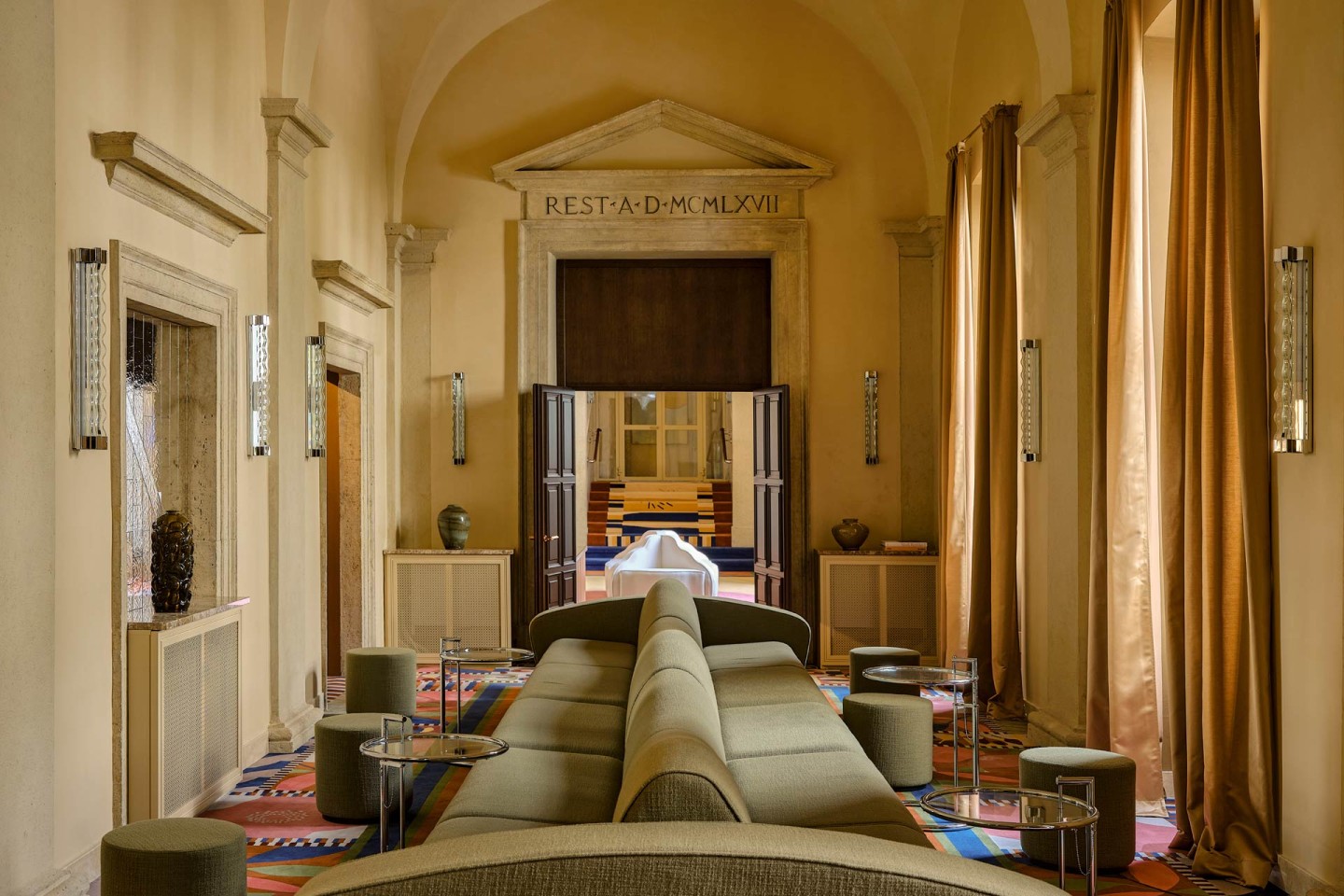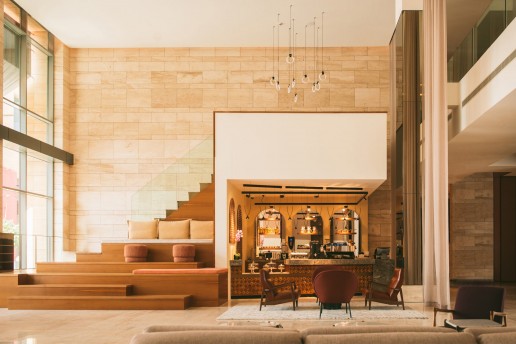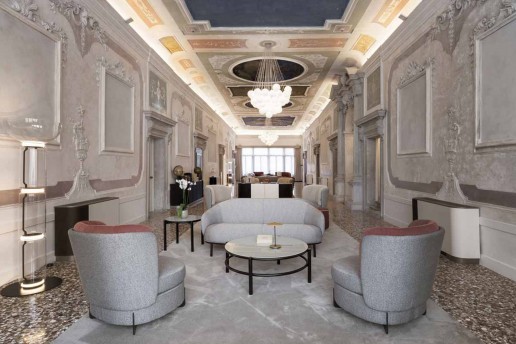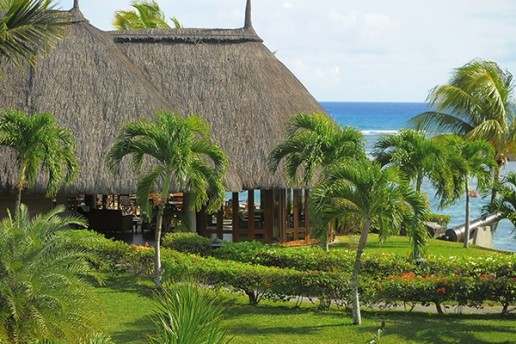Palazzo Talìa reopens following restoration
Palazzo Talìa has reopened its doors in the heart of Rome, heralding a new era for the historic property.
Originally built in the 16th century, the building was once home to ancient Roman Gods. Over the centuries, layers of houses and palaces accumulated, culminating in the Renaissance when humanist Angelo Maria Colocci, secretary to Pope Leo X de’ Medici, established his residence on the site.
This respectful three-year restoration project is spearheaded by the Federici family who have carefully selected a trio of Italian artisans to breathe life back into the Palazzo, preserving its architectural heritage and weaving in the rich tapestry of the building’s illustrious past.
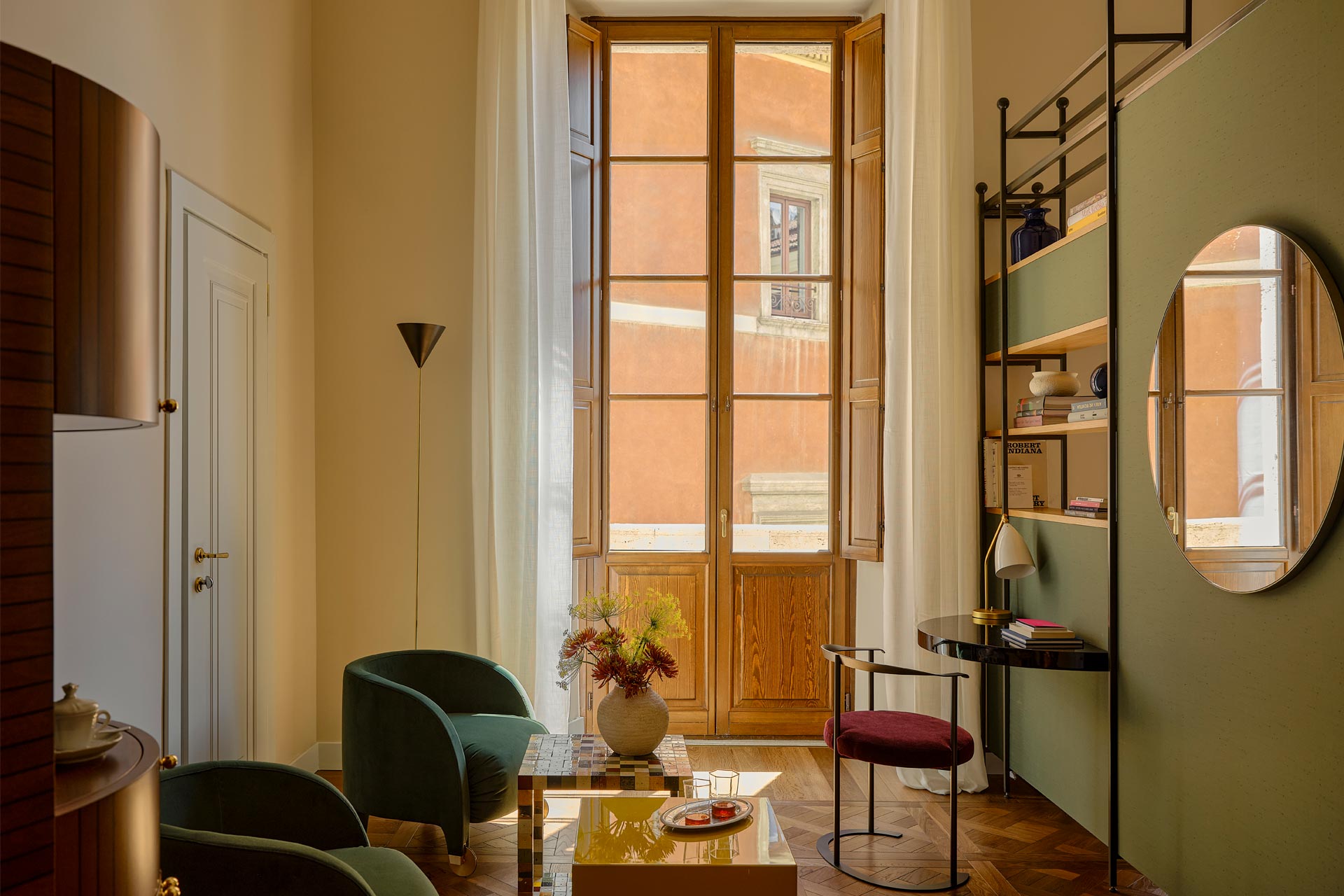
Studiolucaguadagnino set the tone by designing all public spaces including the restaurant, bar and wellness spa, seamlessly marrying opulence with contemporary allure. The team’s first venture into hospitality is a celebration of chromaticism where craftsmanship reigns supreme. One of the stand-out pieces is a monumental floral carpet, guiding guests through the palace, leading to the central staircase and the Magna Hall – 248 square metres of grandeur and magnificence adorned with 18th-century frescoes by painter Gaspare Serenari, destined for exclusive private events or reserved along with adjacent suites such as the Talìa Suite.
Studiolucaguadagnino also designed the Terrace Suite, a bespoke room on the top floor, enriched with peach wood panelling and an extraordinary 66-square-metre terrace overlooking the inner courtyard. This urban oasis, brimming with tropical greenery and curated by landscape artist Blu Mambor, doubles as a vibrant lounge, housing the bar and part of the restaurant’s seating, both open to hotel guests.
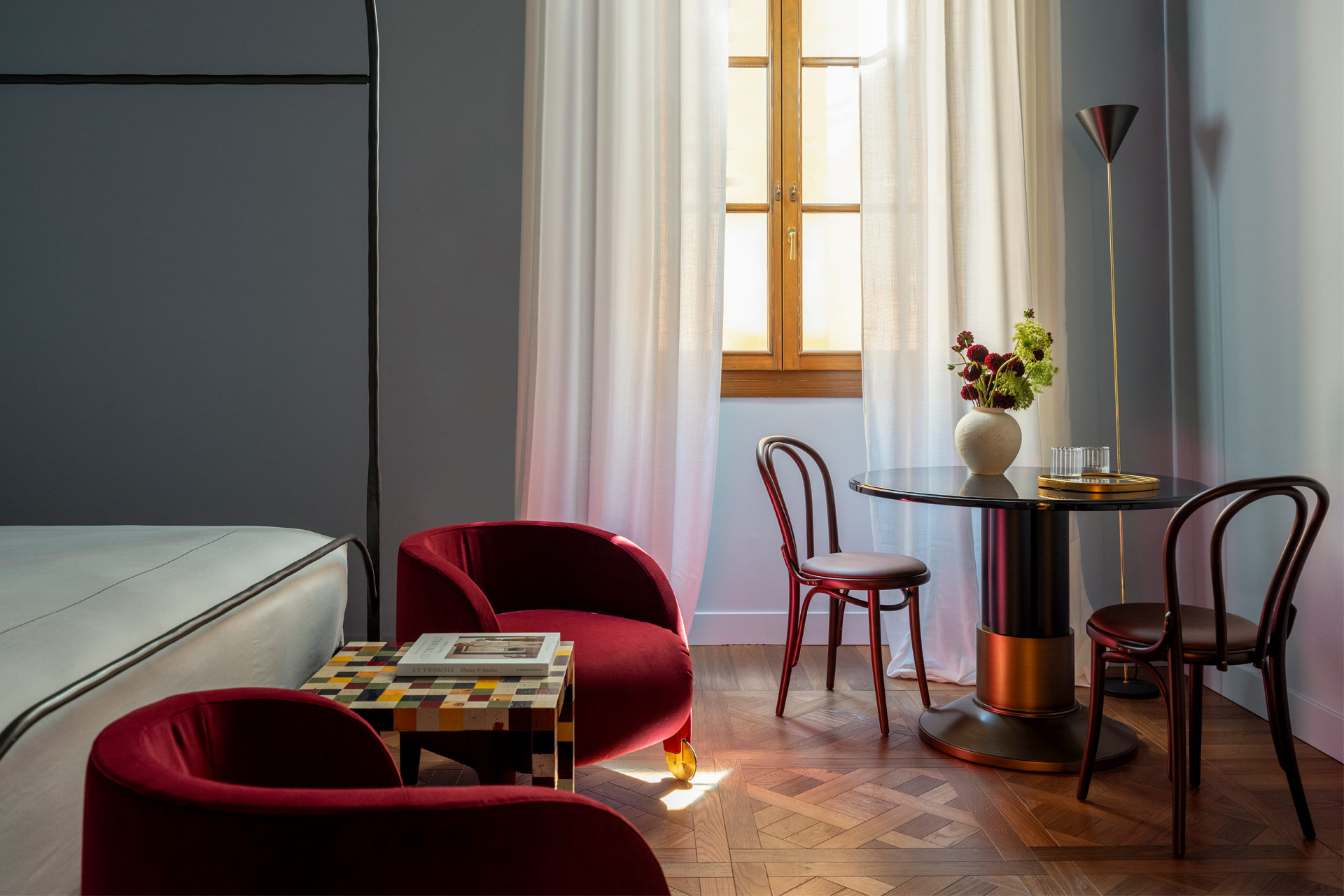
“What does it mean to undertake a project like hotel interior design?” asks comments Pablo Molezún of studiolucaguadagnino. “Perhaps it’s one of the quintessential expressions of this profession. This is because decorative arts are not only enjoyed by guests but also by the public. The most exhilarating aspect was pondering how to intervene in a place so steeped in history and tailor it to a completely different, bespoke garment to breathe new life into the palace.”
Architect Marianna Lubrano Lavadera from the design studio and store MIA Home Design Gallery, along with architect Laura Feroldi from Laura Feroldi Studio, designed the remaining 25 rooms. Each room is unique and bespoke, with much of the furniture being one-of-a-kind, handmade pieces, offering an eclectic blend of classic and contemporary style.
Related Posts
21 February 2022
Design Hotels welcomes four new members
19 January 2022
Palazzo Nani Venice joins Radisson Collection
5 October 2017
